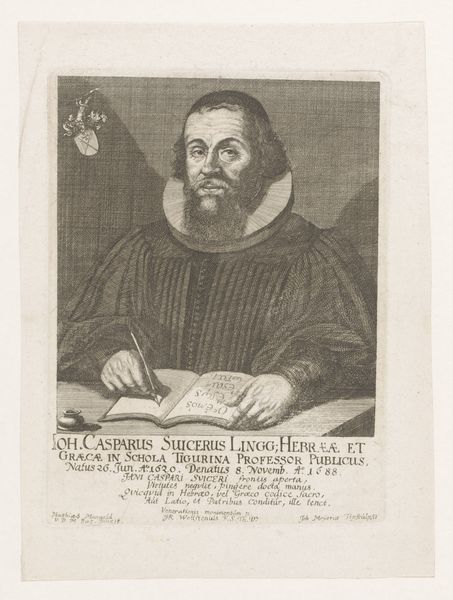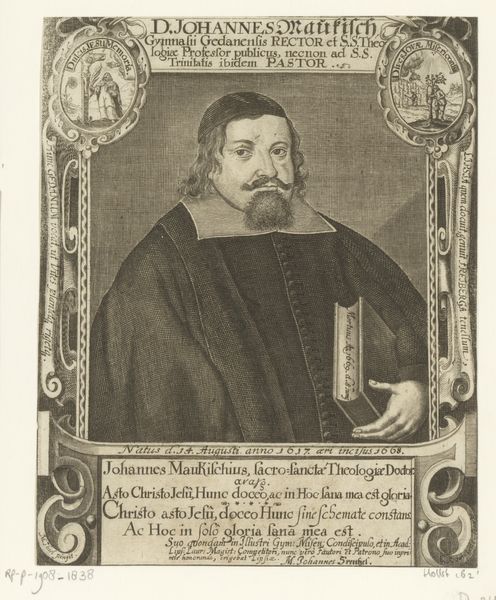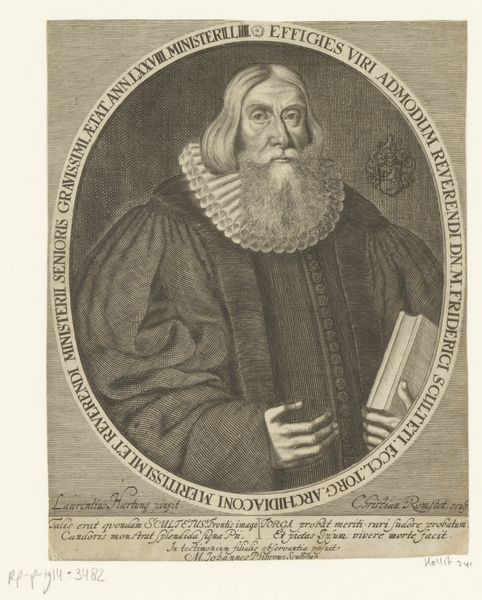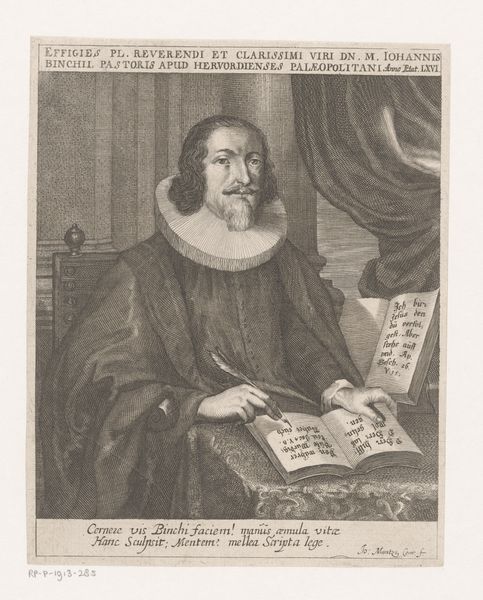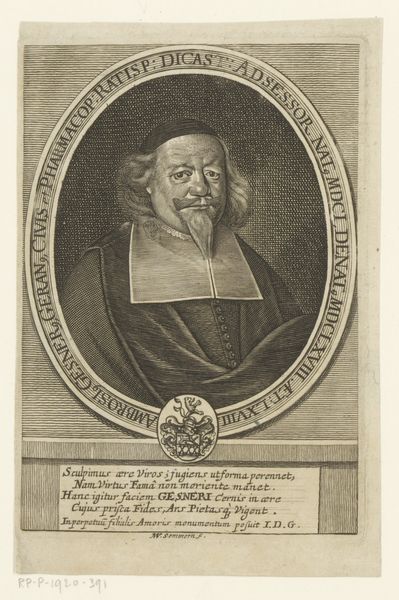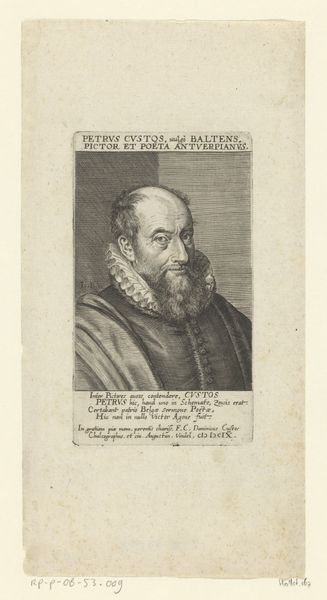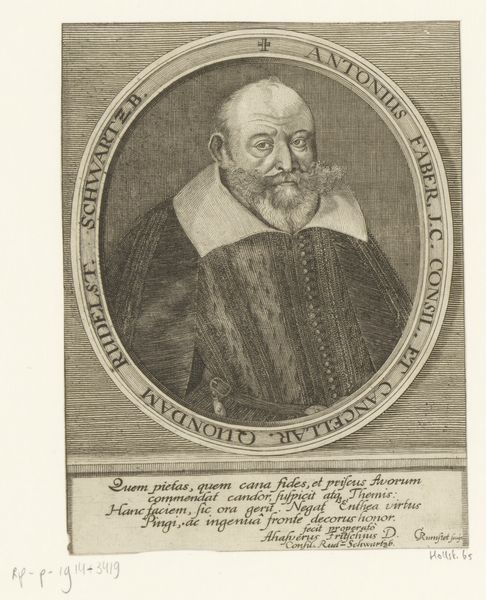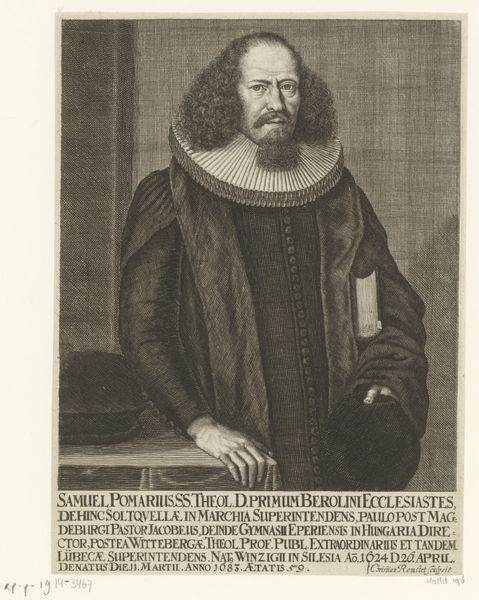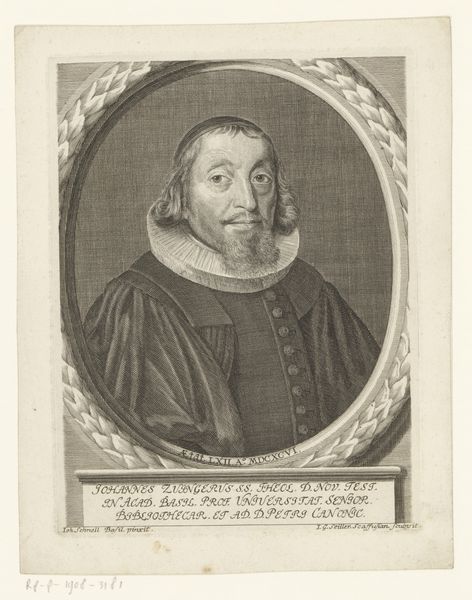
engraving
#
portrait
#
aged paper
#
baroque
#
old engraving style
#
history-painting
#
engraving
Dimensions: height 236 mm, width 152 mm
Copyright: Rijks Museum: Open Domain
Curator: Look at this remarkable engraving; it's a portrait of Johann Caspar Maurer, created by Conrad Meyer in 1679. It's part of the Rijksmuseum's collection. The sitter, Johann Caspar Maurer, looks directly at us. He is holding an open book, looking scholarly and pious. Editor: Wow, there's something intense about this. It feels almost confrontational. It's not just a simple portrait; he's engaging the viewer in some kind of discourse. Curator: Exactly! Meyer crafted this portrait not merely to depict Maurer’s likeness but also to establish him as a man of knowledge and faith within his socio-religious community. The text and the deliberate posture contribute to constructing this persona. Editor: It’s pretty successful in that then. He has such a... serious look, right? I mean, the tight lines of the engraving make him look very sober, as if he carries a great burden on his shoulders. Even that massive ruff collar looks a little uncomfortable. What can you tell me about those inscriptions and all the detail? Curator: The work showcases baroque sensibilities, which aimed for detailed imagery that captures complex emotion. Also notice the layers and the detail on display which could very well reveal much about the family ties and the influence of the man depicted. It's likely commissioned by or for the Maurer family to celebrate their patriarch, thereby reinforcing his image and status within Zurich society. Editor: I get it, like early PR! To think of these works as meticulously crafted "press releases" in ink gives a lot more weight to these prints. He even points towards some line from the good book. A little on the nose, sure, but what an interesting perspective. So it’s basically saying, ‘Remember Johann, he’s scholarly, he's holy and Zurich is better because of him. Curator: In essence, yes. These portraits functioned as statements of identity, crafted to preserve and project an individual's—or, more often, a family’s—desired image for posterity. Editor: So it's really cool seeing beyond the simple image to decode this narrative and intention that's baked right into its creation. It makes you see a stuffy old image with a very contemporary, communicative force behind it. Curator: Indeed. And appreciating that intentionality deepens our understanding of both the artwork and the historical period from which it comes.
Comments
No comments
Be the first to comment and join the conversation on the ultimate creative platform.
